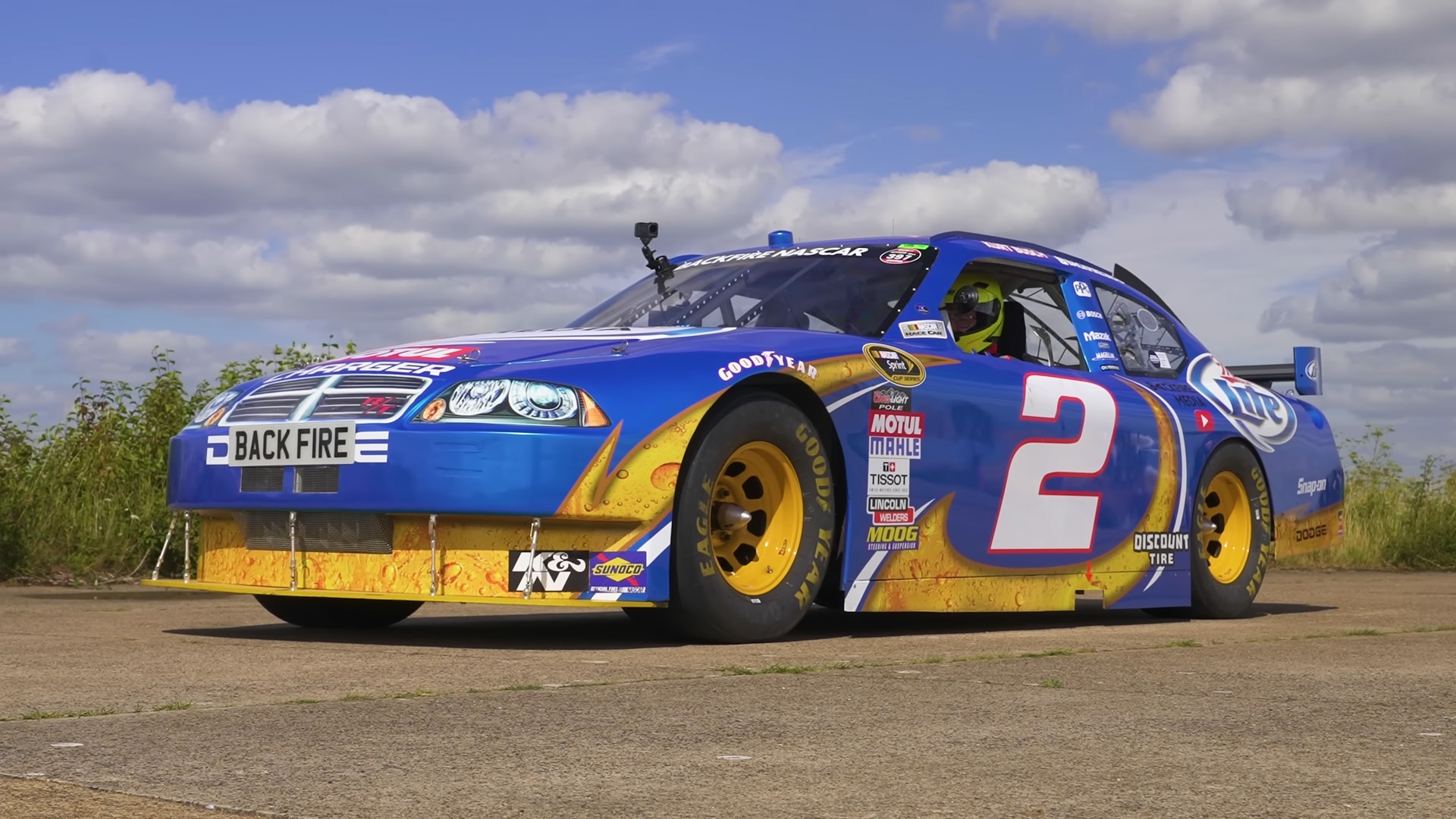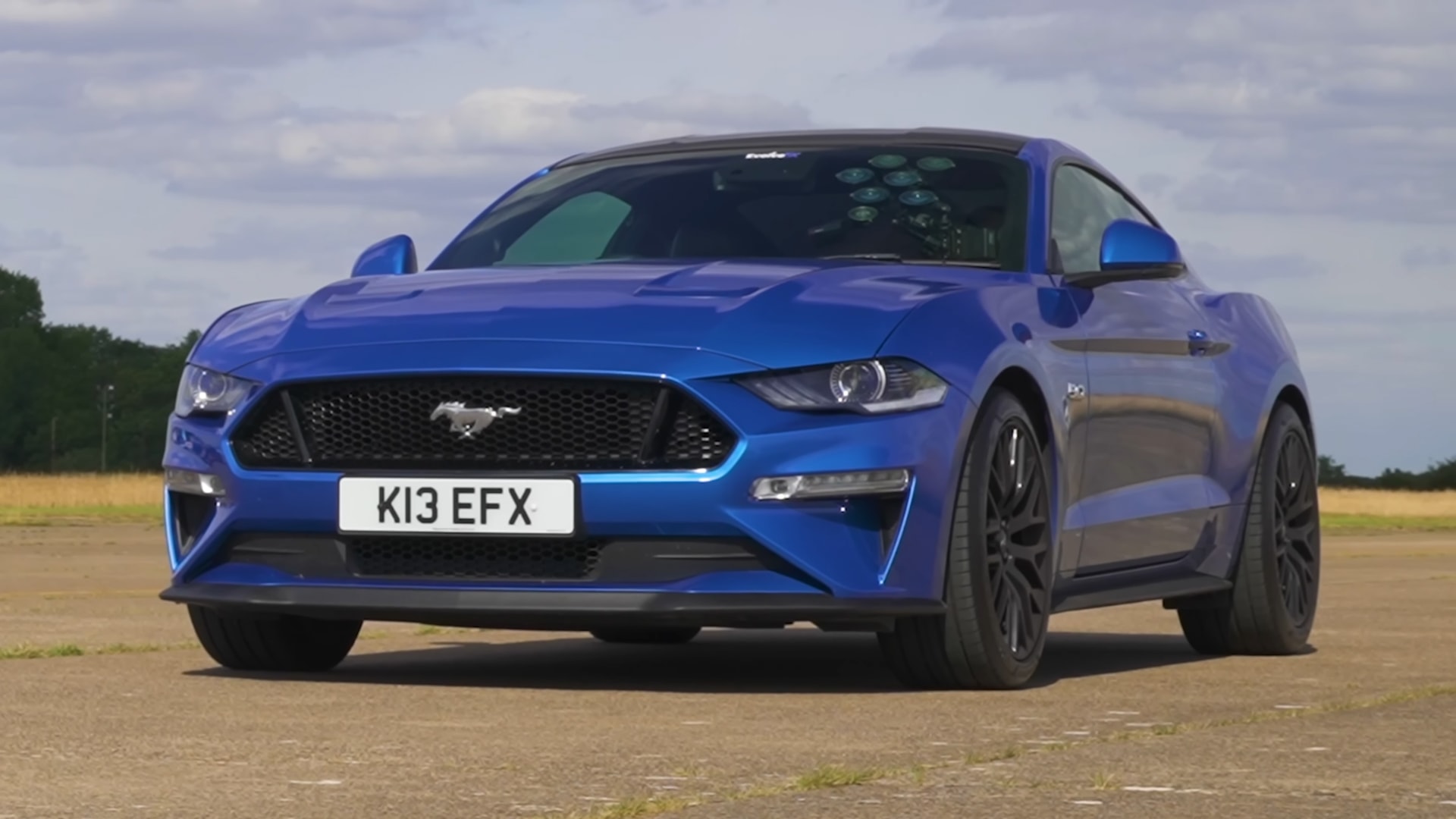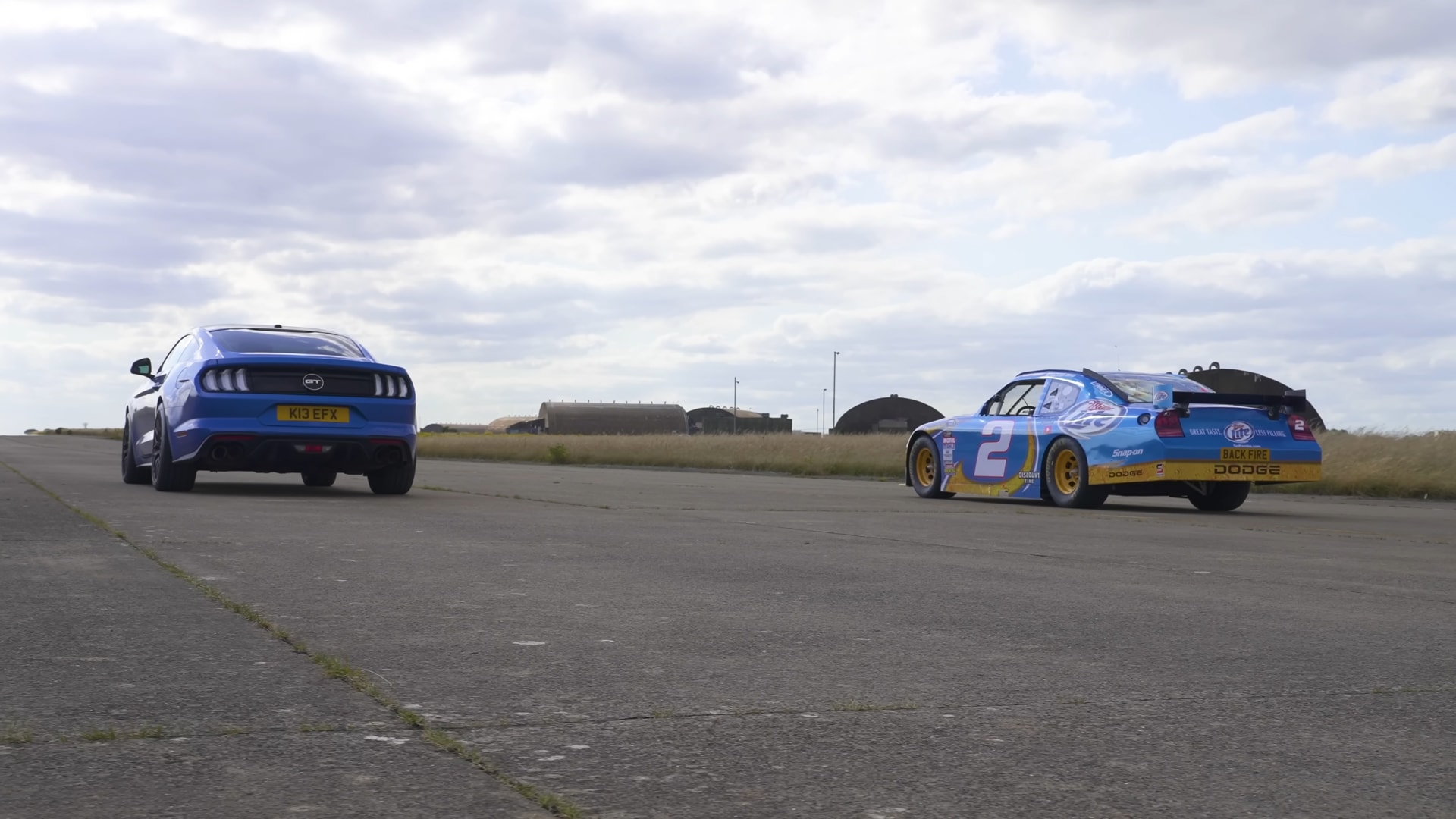A unique matchup was set on a British drag strip: a NASCAR-spec Dodge Charger against a Ford Mustang. The Charger, a former Penske Racing South competitor driven by Kurt Busch, boasted a 5.9-liter V8 engine producing 690 horsepower.
The Mustang, a UK-spec S550 generation, was equipped with a 5.0-liter V8 producing 445 horsepower. Despite the Charger’s substantial power advantage, the outcome of this drag race was far from predictable.
The Charger’s NASCAR heritage gave it a distinct advantage in terms of power and acceleration. Its 5.9-liter V8 engine, tuned down from its maximum output of 888 horsepower, still delivered a formidable punch.

However, the Mustang, despite its smaller engine, was no slouch. Its 5.0-liter V8 offered a respectable power output, and its lighter weight could potentially give it an edge in acceleration. The drag race began with both cars lined up at the starting line. The green light flashed, and the Charger and Mustang lunged forward.
The Charger initially pulled ahead, its powerful engine propelling it down the track. However, the Mustang, with its lighter weight and responsive handling, was able to keep pace. As the cars neared the finish line, the race was too close to call. The outcome would be decided by the slightest margin.
In the end, the Charger crossed the finish line just ahead of the Mustang, securing a narrow victory. Despite the Mustang’s impressive performance, the Charger’s raw power and NASCAR pedigree proved to be the deciding factors. The drag race was a thrilling demonstration of American muscle, showcasing the capabilities of both iconic vehicles.
The Ford Mustang GT had dominated the previous races, winning twice in a row with a time of 13 seconds flat, while the Dodge trailed behind at 13.4 seconds. However, when NASCAR encountered unexpected technical difficulties, Mat had to bring in a replacement car to face the seemingly unbeatable Mustang.

Enter the Cupra Formentor VZ3 ABT. This Spanish family SUV, powered by a 2.0-liter 4-cylinder turbocharged engine that produces 365 hp and 332 lb-ft of torque, was not to be underestimated. Its 7-speed automatic transmission sent power to all four wheels, and it weighed approximately 3,562 pounds.
With its aftermarket ABT Sportsline performance tuning and design package, it carried a price tag of almost 61k GBP. Despite the Mustang’s reputation, the Cupra VZ3 proved to be a formidable competitor. After four intense races, each car had claimed two wins.
The decisive fifth race saw the Cupra VZ3 edge out the Mustang by a narrow margin, crossing the finish line 0.2 seconds faster with a time of 12.8 seconds compared to the Mustang’s 13 seconds.

